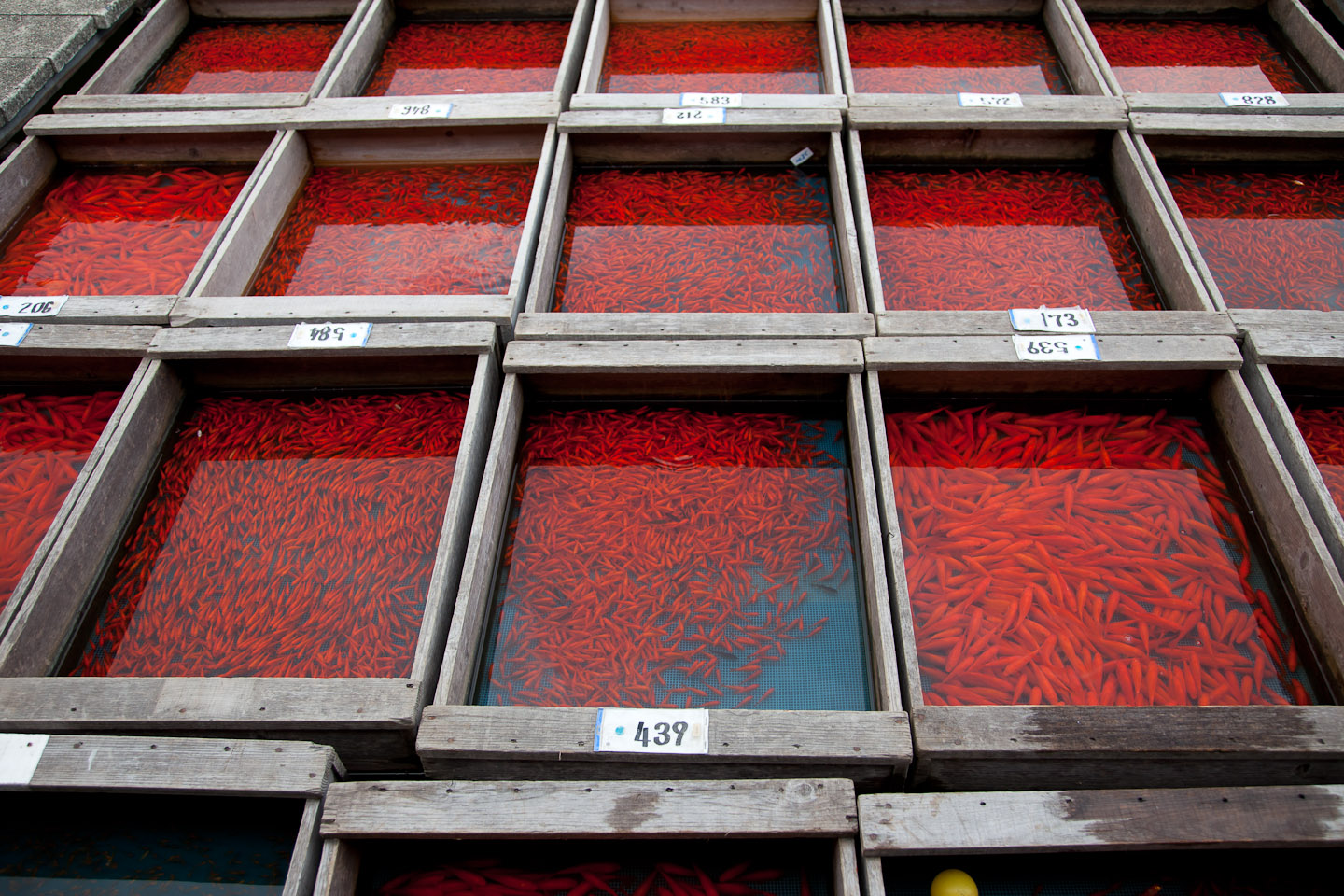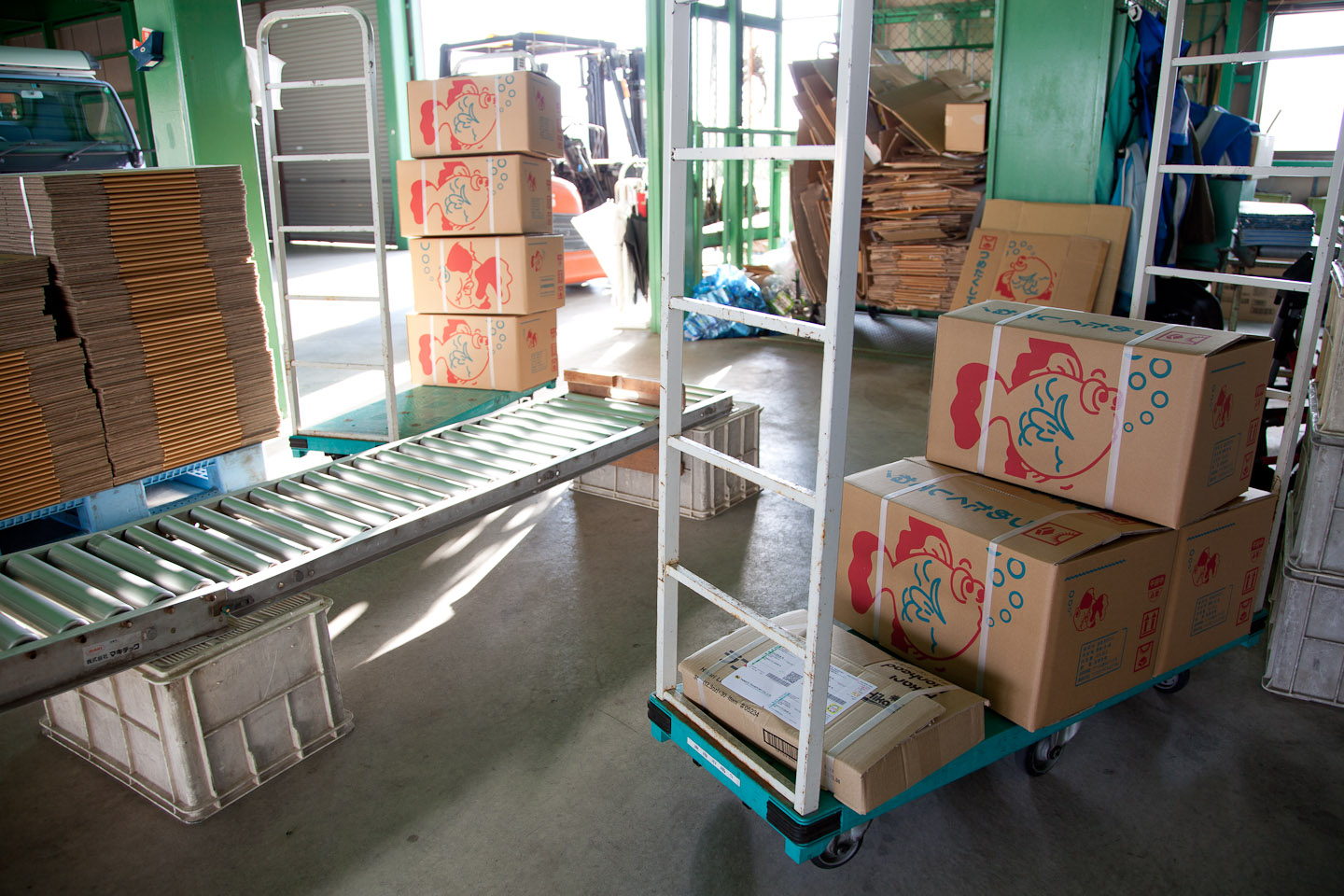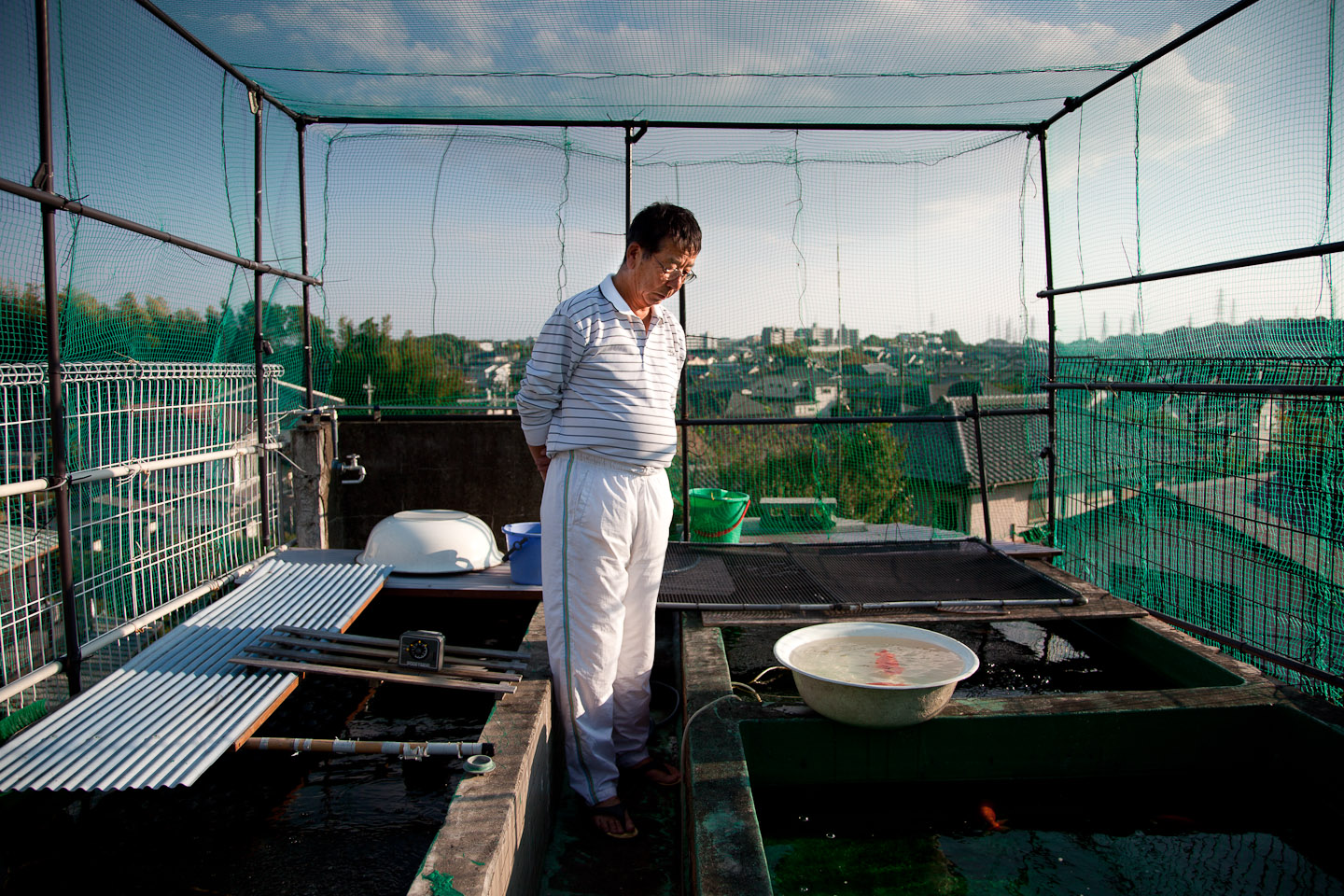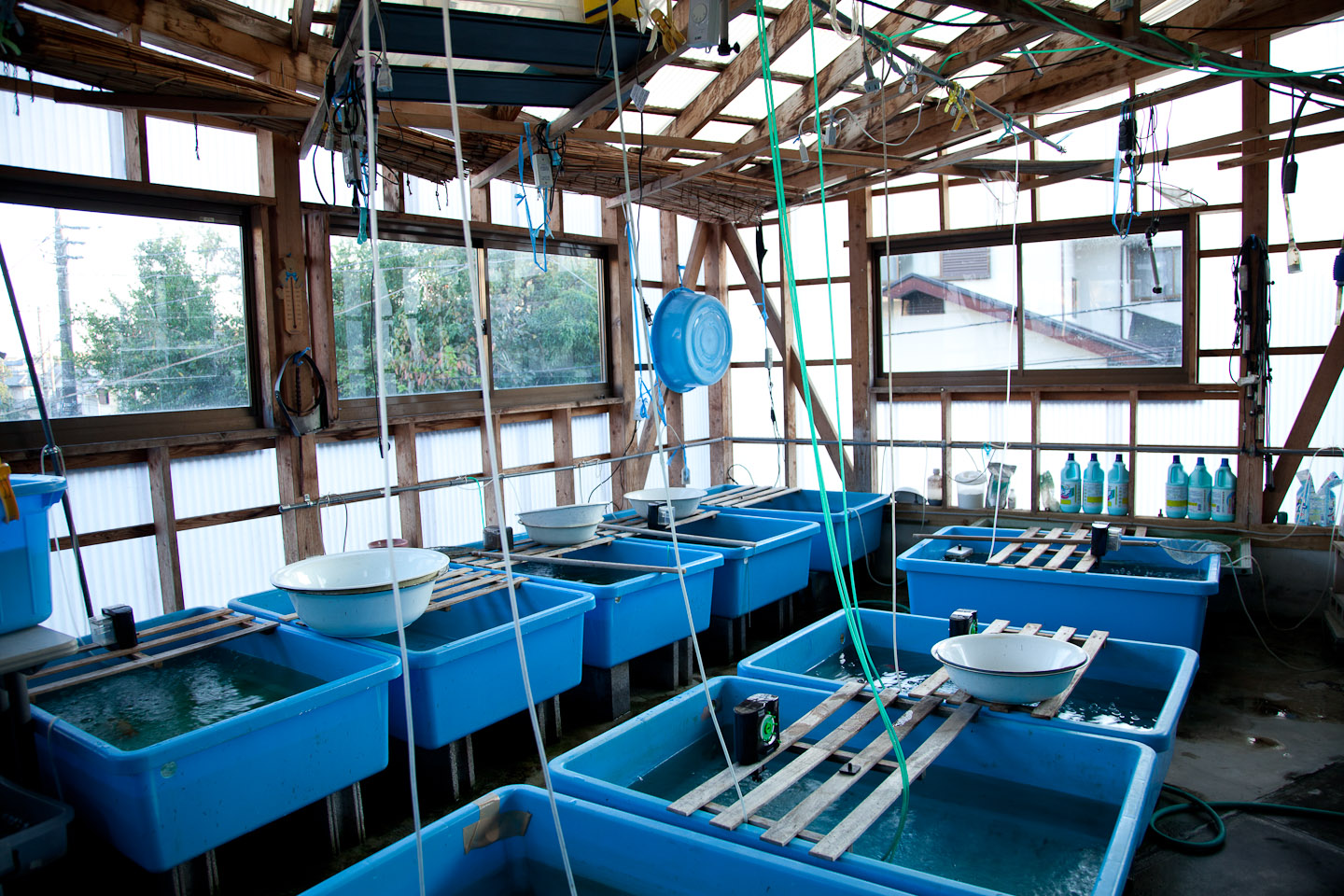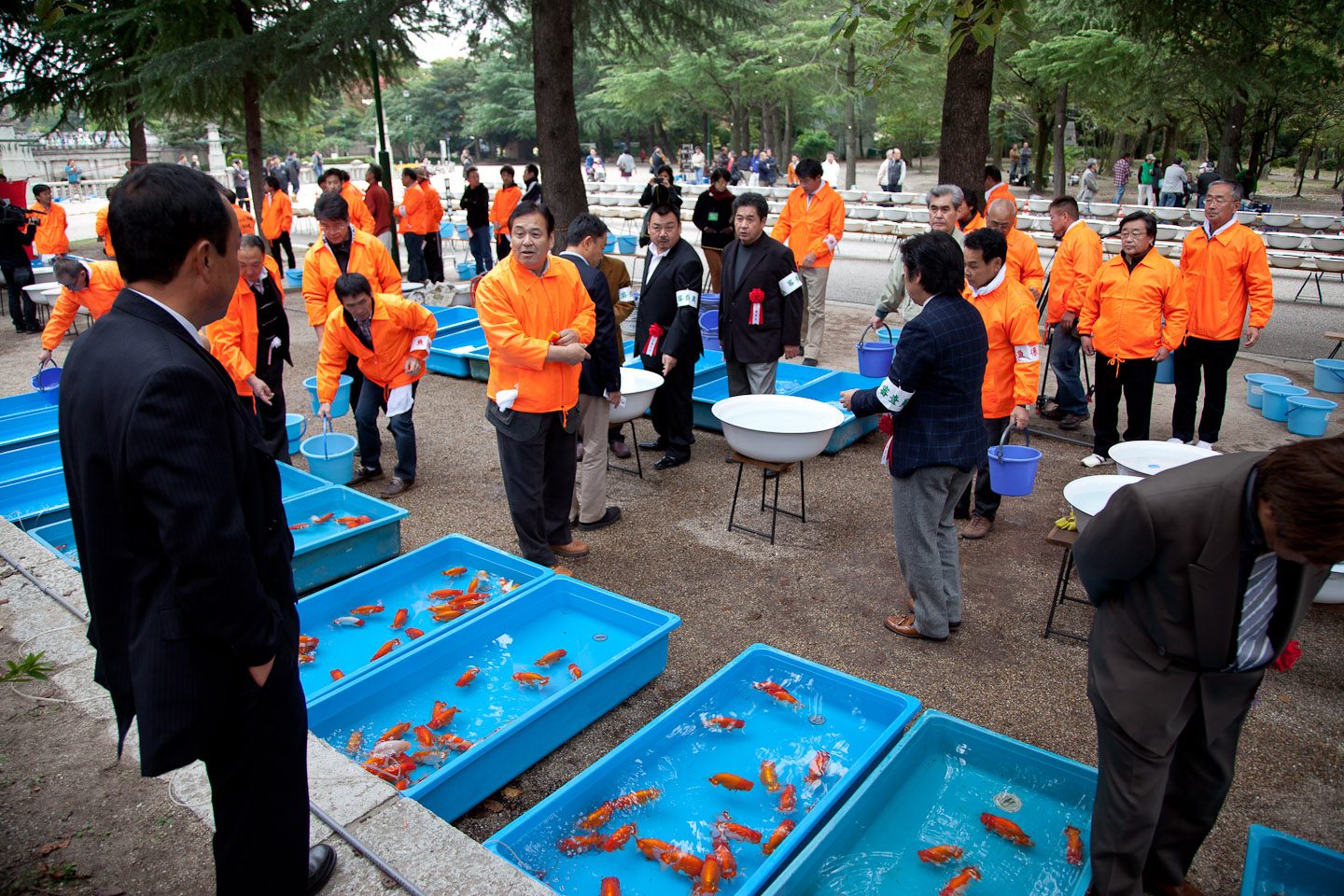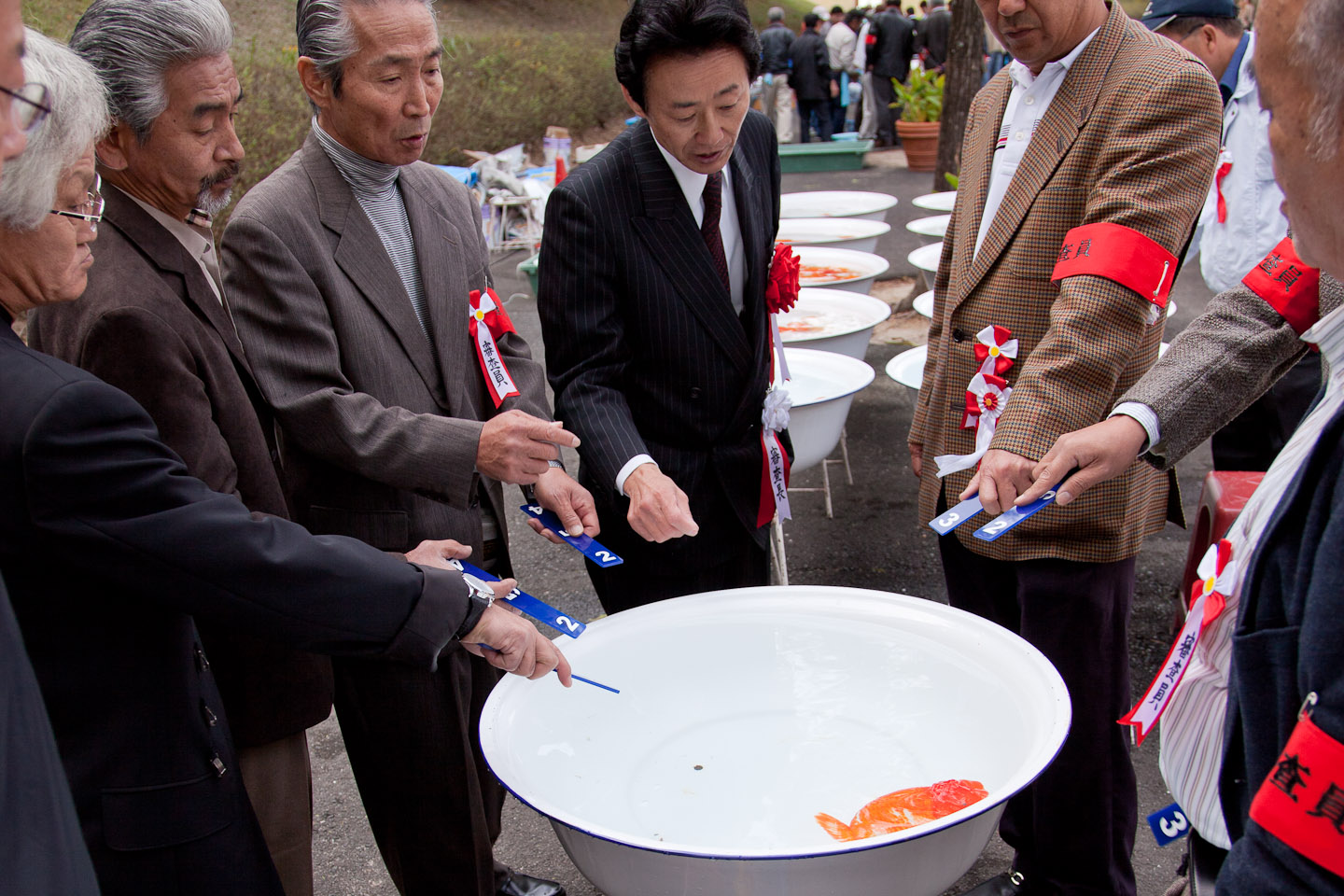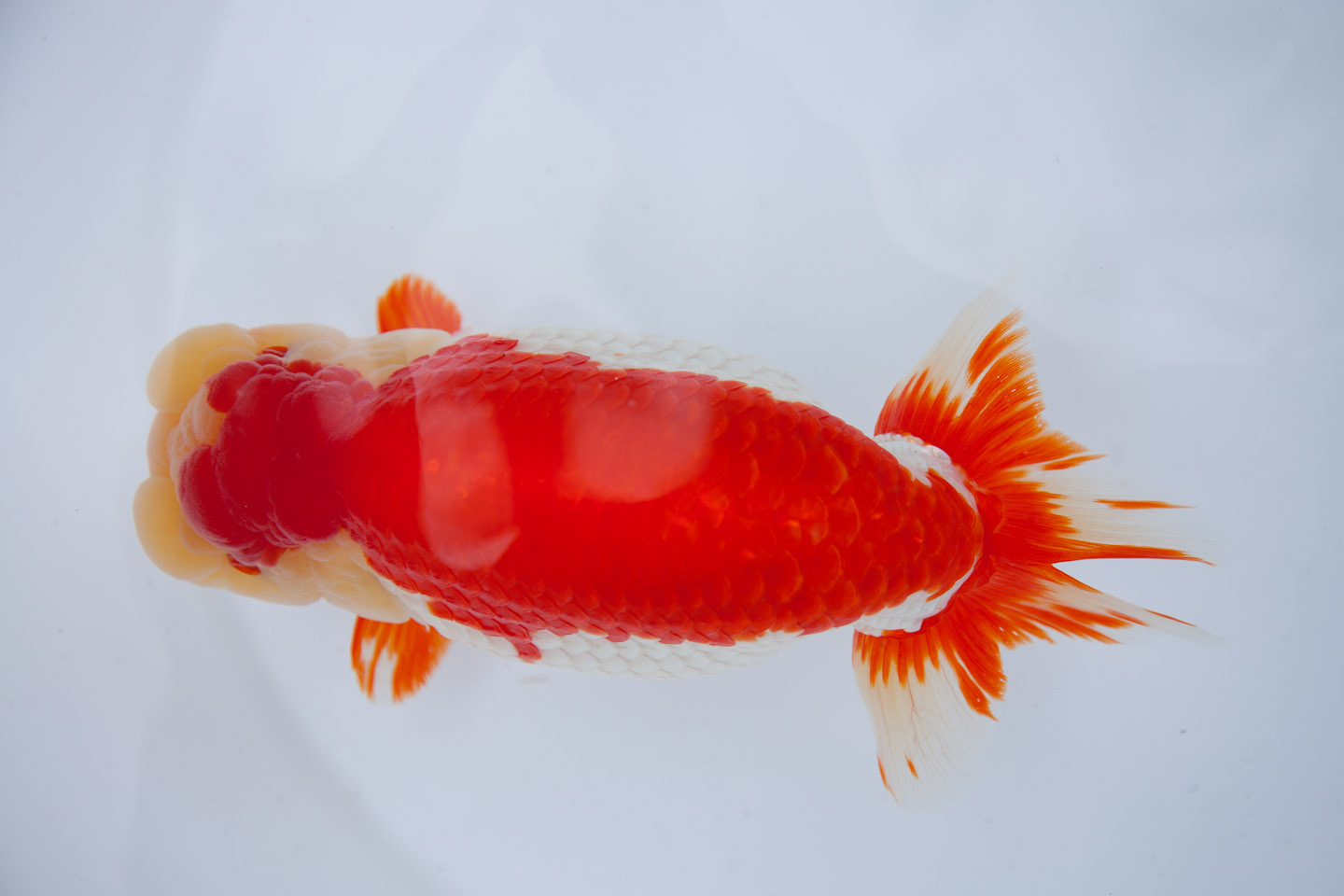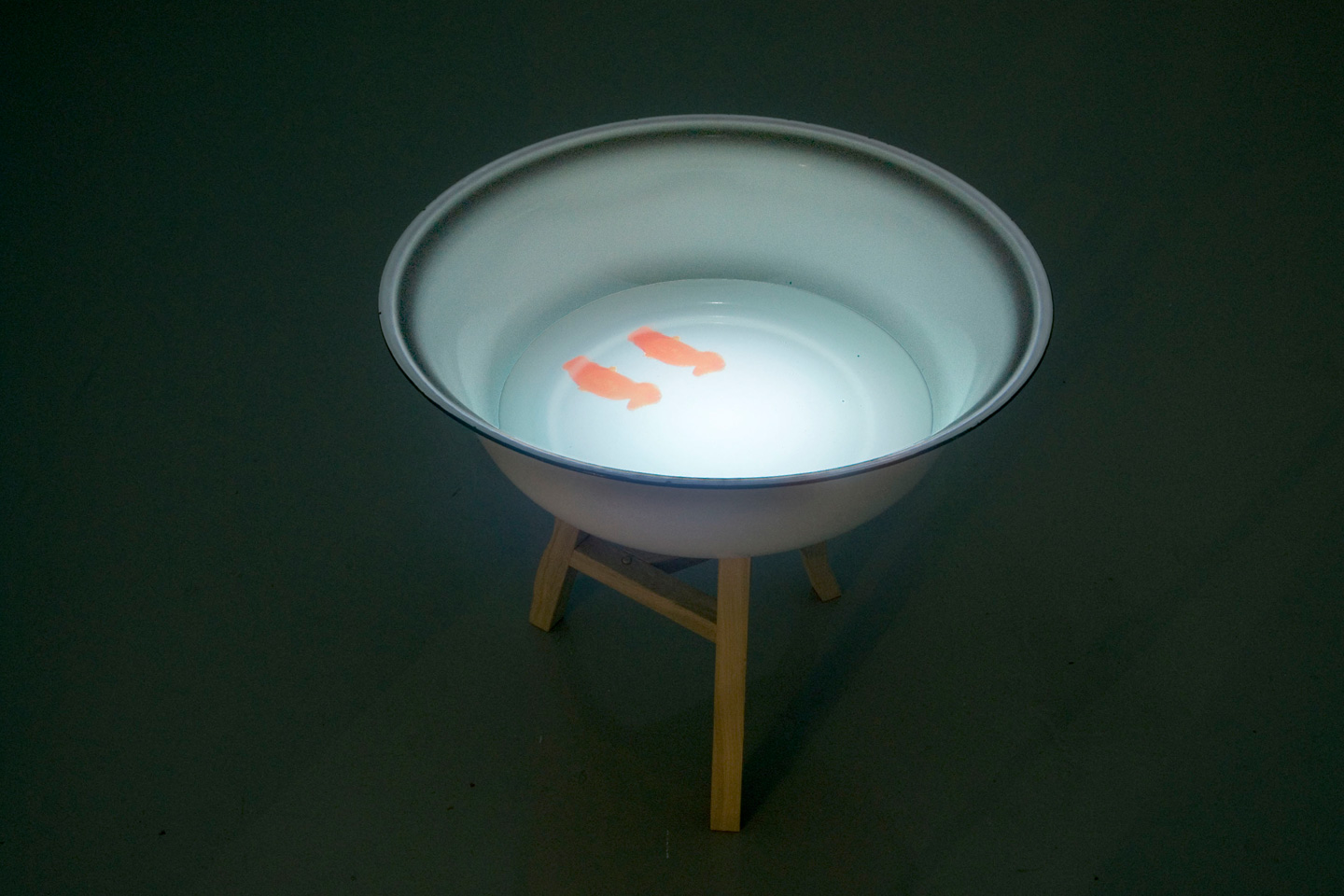A short documentary video depicts stages through which Japanese goldfish become objects: the tools, criteria, trade, ceremonials, economy and culture.
An amateur breeder walks through his domestic farm; describing how his bespoke house was designed and built for goldfish breeding. A commercial goldfish market and auction house go through sorting and packing their orders of the day, processing boxes of goldfish for shipping.
In the annual national goldfish competition professional breeders and judges explain the design criteria of a winner fish, describing the ideal body features and the core guideline: a physique as far removed from the carp.
The Ranchu breed, which (like all goldfish) originates in carp, should differ significantly from their ancestor, and a successful specimen demonstrates the control of human over nature.
The design of the Ranchu shape, initiated in the Edo period, illustrates the way cultural ideas and fantasies infiltrate biology in lieu of evolution. One of the popular Ranchu head shapes is that of a “Shishi” – a mythological lion.
Within the ambition to turn a carp into an imaginary monster lie the essence of this practice, tying together semi-conflicting desires derived from techno-fantasies and cultural conservation.
The Ranchu, also known in Japan as the ‘king of goldfish’, has been designed specifically to be viewed from the top. This aerial viewpoint has determined the body shape of this species as their cultivation began in an era that pre-dated glassware. When matter determines an animal’s shape, the animal itself becomes a manifestation of manipulated material, and a creature made for viewing from one angle is rendered two dimensional in essence.
The film explores the taxonomy of a particular kind of species – the animal product. The Japanese goldfish industry and culture illustrates the unique existence of this species; man made, biologically controlled and designed for aesthetic purposes.
Unlike many other manipulated breeds, a goldfish has no ‘function’, they are not created as food, workforce, guardians or companions but solely as an aesthetic being. This particular role accentuates their unnatural specification – somewhere between the animal kingdom and the world of manufactured objects.
> Commissioned by The Arts Catalyst for the exhibition Transformism at the John Hansard Gallery, Southampton
> Thanks to Kyoko Tachibana (S-AIR), Norikatsu Ito, Koichi Ito, Megan Rodger


